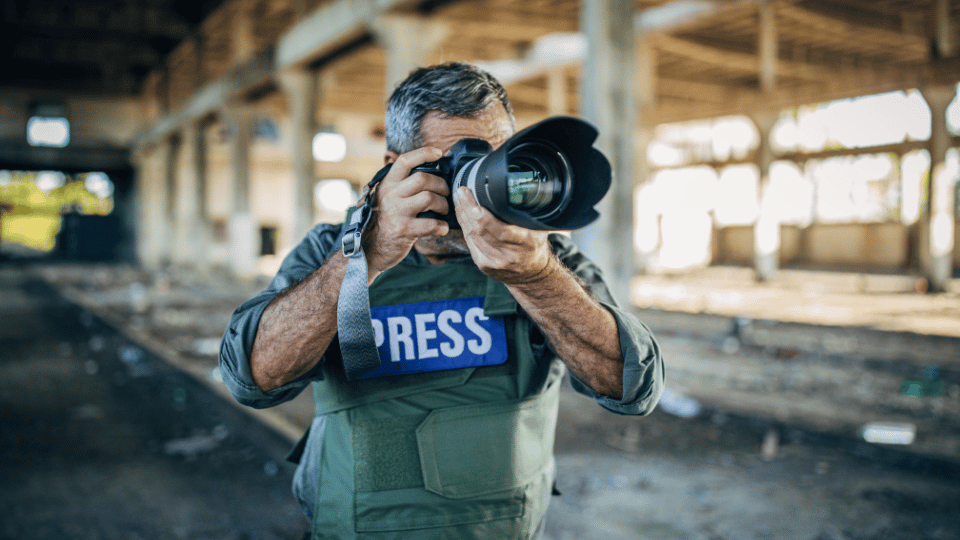Staying Safe While Covering Dangerous Stories
In the world of journalism, covering dangerous stories is often a necessary part of the job. Whether it’s reporting on conflict zones, natural disasters, or crime scenes, journalists put themselves at risk to bring important news to the public. While these stories can be thrilling and impactful, they also present significant safety challenges. In this article, we will explore essential tips and strategies to help journalists stay safe while covering dangerous stories.
1. Conduct Thorough Research and Preparation
Before embarking on any assignment, it is crucial to conduct thorough research and preparation. Familiarize yourself with the location, potential risks, local customs, and any safety advisories issued by authorities. Understanding the context and environment will enable you to make informed decisions and minimize risks.
2. Establish Reliable Contacts and Networks
Building a network of reliable contacts, both local and within the journalism community, is invaluable when covering dangerous stories. These contacts can provide valuable insights, guidance, and even assistance in times of need. Establish relationships with fixers, translators, local journalists, and other professionals who can offer support and enhance your safety.
3. Obtain Proper Training and Equipment
Investing in proper training and equipment is essential for staying safe while covering dangerous stories. Consider enrolling in hostile environment training courses that teach you essential skills such as first aid, risk assessment, conflict management, and digital security. Additionally, ensure you have the necessary safety equipment like helmets, gas masks, body armor, and first aid kits.
4. Assess and Minimize Risks
Risk assessment should be an ongoing process throughout your assignment. Continuously evaluate the risks involved in each situation and take appropriate measures to minimize them. This could include avoiding certain areas, traveling in groups, or having a local guide accompany you. Always trust your instincts and prioritize your safety above all else.
5. Maintain Situational Awareness
Maintaining situational awareness is crucial in dangerous environments. Be observant of your surroundings, stay informed about current events, and be mindful of any changes or potential threats. Regularly monitor local news, follow social media updates, and stay connected with your contacts to stay informed and adapt your plans accordingly.
6. Secure Communication Channels
In today’s digital age, securing communication channels is of utmost importance. Encrypt your emails and use secure messaging apps to protect sensitive information. Avoid discussing sensitive topics in public areas or over unsecured networks. Consider using virtual private networks (VPNs) to protect your online activities and maintain privacy.
7. Dress Appropriately and Blend In
Dressing appropriately and blending in with the local population can help you avoid drawing unnecessary attention to yourself. Research the local customs and dress modestly if required. Wearing clothing that allows for easy movement and protects against extreme weather conditions is also essential.
8. Practice Self-Care and Mental Health Support
Covering dangerous stories can take a toll on your mental and emotional well-being. Prioritize self-care and seek support when needed. Maintain a healthy work-life balance, engage in stress-relieving activities, and debrief with colleagues or a mental health professional if necessary.
9. Have an Emergency Plan
Even with the best preparation, emergencies can still occur. It is crucial to have an emergency plan in place. Identify safe zones, medical facilities, and evacuation routes in advance. Share your itinerary with trusted colleagues or family members and establish regular check-ins to ensure your well-being.
10. Learn from Experienced Journalists
Lastly, learn from the experiences of seasoned journalists who have covered dangerous stories. Seek out their advice, read their accounts, and attend industry conferences or workshops where they share their insights. Their knowledge and wisdom can provide invaluable guidance and help you navigate the challenges of reporting in hazardous environments.
Conclusion
Staying safe while covering dangerous stories is of paramount importance for journalists. By conducting thorough research, establishing reliable contacts, obtaining proper training and equipment, assessing and minimizing risks, maintaining situational awareness, securing communication channels, dressing appropriately, practicing self-care, having an emergency plan, and learning from experienced journalists, you can enhance your safety and effectively carry out your journalistic duties. Remember, prioritizing your safety enables you to continue bringing important stories to the world while minimizing unnecessary risks.
Key Takeaways:
- Thorough research and preparation are essential before embarking on any assignment. Familiarize yourself with the location, potential risks, and local customs.
- Establish a network of reliable contacts who can provide guidance and support in dangerous situations.
- Investing in proper training and equipment, such as hostile environment training and safety gear, is crucial for staying safe.
- Continuously assess and minimize risks throughout your assignment, prioritizing your safety above all else.
- Maintain situational awareness by staying informed about current events and monitoring your surroundings.
- Secure communication channels to protect sensitive information and maintain privacy.
- Dress appropriately and blend in with the local population to avoid drawing unnecessary attention.
- Prioritize self-care and seek mental health support when needed to maintain your well-being.
- Have an emergency plan in place, including identifying safe zones, medical facilities, and evacuation routes.
- Learn from experienced journalists through their advice, accounts, and industry events.
To further enhance your knowledge and skills in modern journalism, consider taking the “NYU | Modern Journalism” online course and certificate program offered by Yellowbrick. This comprehensive program can provide you with valuable insights and practical tools to navigate the challenges of reporting in hazardous environments. By combining the knowledge gained from this course with the safety tips outlined in this article, you’ll be well-prepared to pursue a successful and safe career in journalism.




